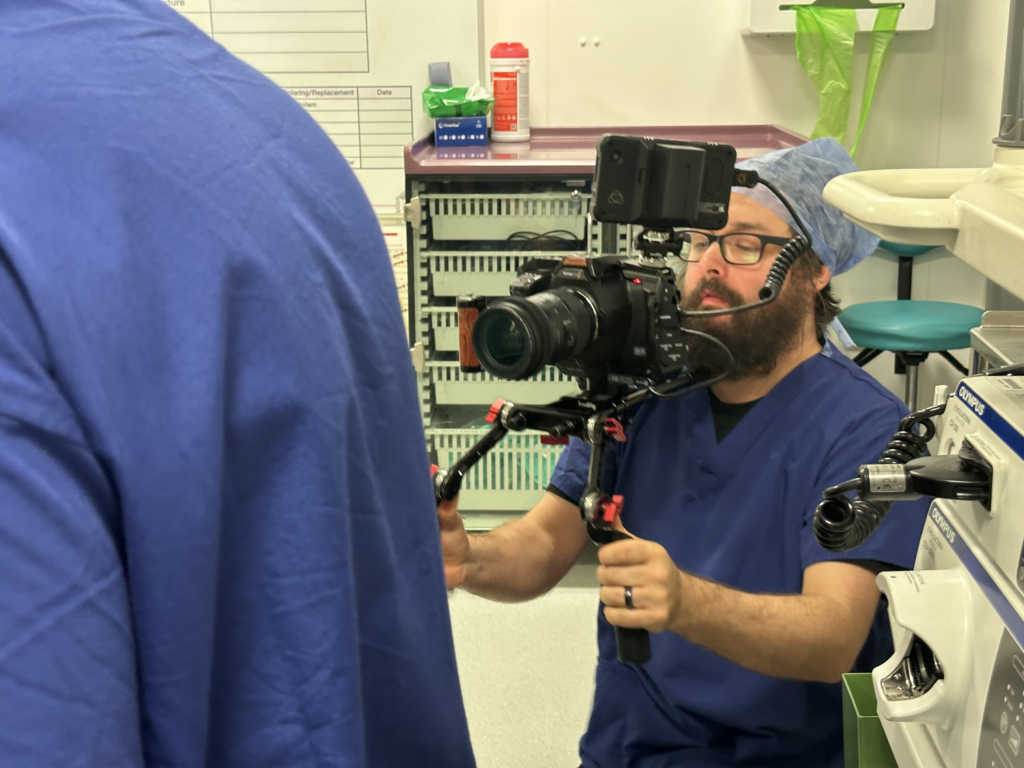Tips to Help You Improve Your Healthcare Video Productions
In the world of healthcare, video content is an invaluable tool for educating patients, training healthcare professionals, and promoting services. Whether you’re producing NHS films, surgical films, or general healthcare videos, the quality of your video production can significantly impact the message you convey. At Healthcare Films by Wildwood, we specialize in NHS video production and healthcare video services, helping healthcare organizations create engaging and informative content. Here are five tips to improve your healthcare video productions, ensuring your content is clear, professional, and impactful.

1. Focus on Clear and Concise Messaging
One of the most important elements of any healthcare video is clarity. Whether you’re creating NHS videos for patients or surgical films for healthcare professionals, your message must be clear and easy to understand. Healthcare films often deal with complex medical information, so it’s crucial to present this information in a straightforward manner.
For patient-facing videos, simplify medical terms and use visuals to help explain concepts. For example, in NHS video production, if you’re explaining a surgical procedure, using animations or diagrams can make the process easier for patients to understand. Avoid overloading the video with jargon, and instead focus on clear, concise explanations. The goal is to ensure that the information resonates with your audience, whether they are patients or medical professionals.
2. Prioritize High-Quality Production Standards
The production quality of healthcare videos can make a huge difference in how your message is received. Whether it’s NHS films, surgery videos, or general promotional content, using high-quality production equipment is essential to capture crisp visuals and clear audio. Poor lighting, blurry images, and inaudible sound can detract from your message and reduce the professionalism of your content.
Invest in professional-grade cameras, microphones, and lighting equipment to ensure your videos meet the highest standards. For surgical films, clear visuals are critical, as the details of the procedure must be captured accurately for both educational and patient-facing content. High-definition video, along with proper lighting and sound, ensures that viewers can engage with the content without distractions.
3. Create Engaging Visuals and Use Animations
In healthcare video production, visuals are one of the most effective ways to communicate complex information. Whether you’re making surgery films, NHS videos, or healthcare promotional videos, using engaging visuals can help explain intricate details in a more understandable way. This is particularly important for surgical films, where demonstrating the steps of a procedure through clear visual aids can help both patients and medical professionals grasp essential information.
Animations, diagrams, and 3D models can be incredibly useful in healthcare videos, as they offer a simple and effective way to explain medical concepts. For example, in NHS video production, using animated graphics to show the human anatomy or the process of a medical treatment can enhance patient understanding. Additionally, when creating surgery videos, animated elements can break down each step of the procedure, making the content more accessible for trainees and viewers alike.
4. Keep the Audience in Mind
Understanding your audience is essential to creating impactful healthcare films. Are you producing NHS films for patients, surgical films for medical professionals, or promotional videos for the public? Each audience has different needs and expectations, and your content should be tailored accordingly.
For patients, especially those who may be anxious or unfamiliar with medical procedures, your videos should provide reassurance and clear explanations. The tone should be empathetic, and the visuals should be calming and easy to understand. For NHS videos aimed at professionals, the content may need to be more technical, with a focus on procedures, new treatments, or educational resources. Surgical films and surgery videos for healthcare staff should provide detailed, step-by-step guides to medical techniques.
Understanding who you’re creating the content for ensures that the tone, pace, and detail of your videos align with the needs of your target audience, enhancing the overall effectiveness of the video.
5. Test and Gather Feedback
Before finalizing your healthcare videos, it’s important to test them with a sample audience to ensure they meet their intended objectives. Feedback is invaluable in identifying areas that may need improvement, whether it’s simplifying a message, improving the pacing, or enhancing the visuals.
For NHS video production or surgical films, testing with both medical professionals and patients can help you assess whether the content is clear, accurate, and engaging. Consider running focus groups or conducting surveys to gather feedback on aspects like video length, clarity of message, and ease of understanding. Once you have this feedback, refine the video as necessary to improve its effectiveness and impact.
Conclusion
Improving your healthcare video productions requires careful planning, professional equipment, and an understanding of your audience’s needs. By focusing on clear messaging, high-quality production, engaging visuals, and audience-specific content, you can create healthcare films that resonate with viewers and deliver crucial medical information effectively. At Healthcare Films by Wildwood, we specialize in NHS video production, surgical films, and other healthcare video services, helping healthcare organizations create content that educates, engages, and inspires. With these tips, you can elevate your video production and ensure your content makes a meaningful impact in the healthcare space.
